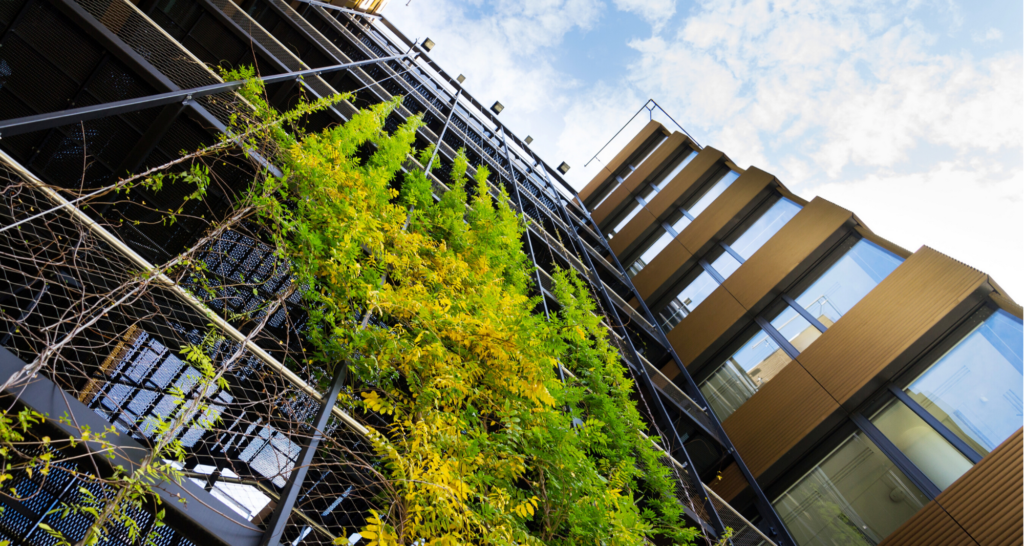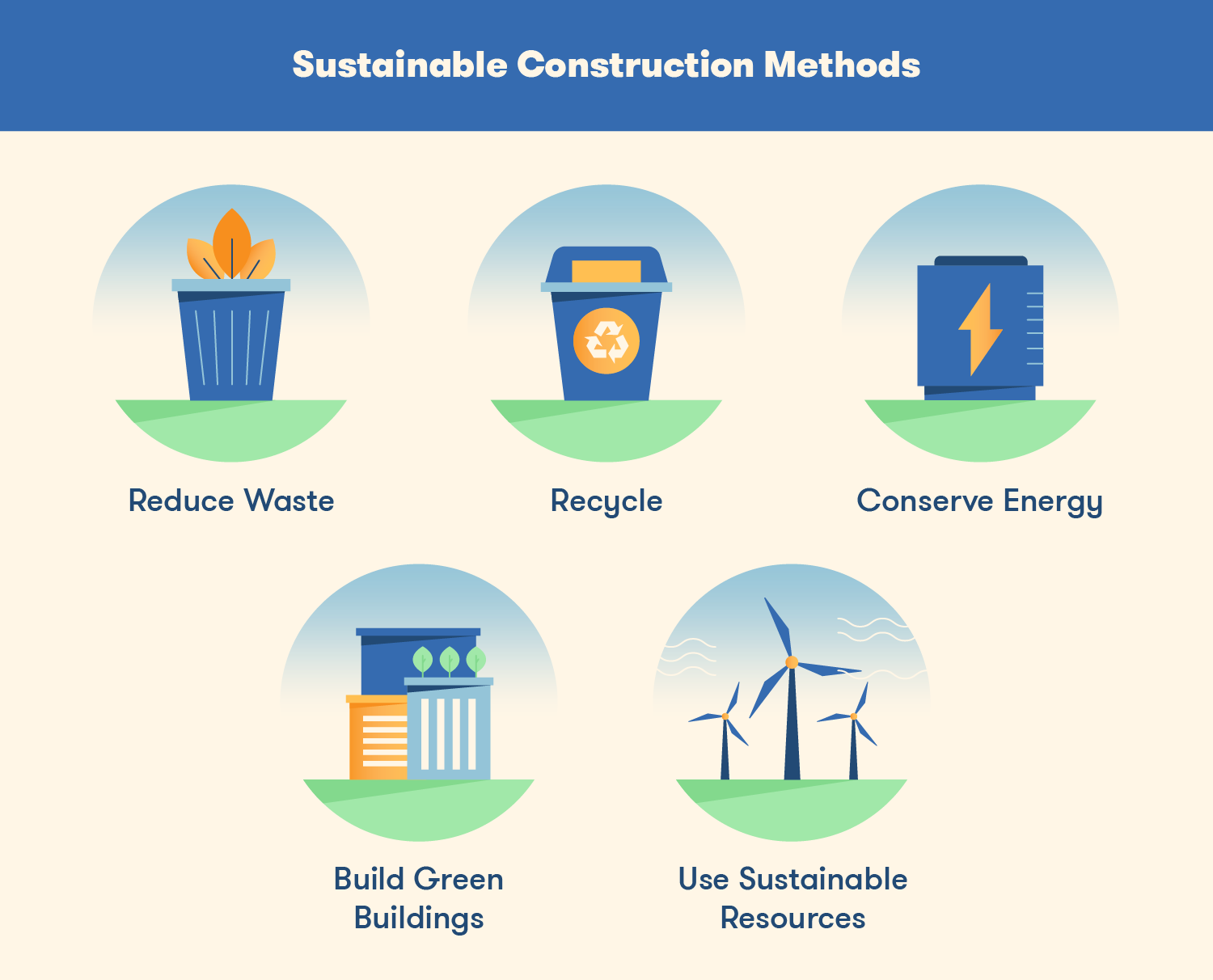How Does Architecture Promote The Use Of Sustainable Construction Practices In Developing Countries?

As the world's population continues to grow, the demand for sustainable construction practices is also on the rise. Sustainable construction practices involve designing, constructing, operating, and maintaining buildings in a way that minimizes their impact on the environment while promoting social, economic, and ecological sustainability. Here are some of the ways in which sustainable construction practices are changing the way we build:
1. Energy Efficiency
Energy efficiency is an essential aspect of sustainable construction practices as it involves designing and building structures that use less energy. This can be achieved through a variety of methods, including:
- Utilizing energy-efficient materials such as low-emissivity windows, insulation, and energy-efficient lighting and appliances.
- Designing buildings to let in natural light, thus reducing the need for artificial lighting.
- Using passive solar heating and cooling to regulate indoor temperatures without the use of electricity.
- Implementing smart building technologies such as automated lighting and temperature control systems.
Energy-efficient buildings not only reduce our carbon footprint, but they also help to reduce energy costs, making them more cost-effective in the long run.
2. Water Conservation
Water conservation is another crucial aspect of sustainable construction practices. Water is a finite resource, and as such, we need to be mindful of how much we use and waste. Some ways in which sustainable construction practices are promoting water conservation include:
- Installing low-flow toilets and faucets to reduce water usage.
- Using rainwater harvesting systems to collect and reuse water for non-potable purposes such as irrigation and flushing toilets.
- Implementing greywater recycling systems that collect and treat wastewater from sinks and showers to be reused for non-potable purposes.
By implementing these water-saving measures, we can help to reduce our water consumption and protect this precious resource for future generations.
3. Waste Reduction and Recycling
Construction and demolition waste are a significant source of landfill waste. Sustainable construction practices aim to reduce waste by minimizing the amount of waste generated during the construction process and by recycling and reusing materials wherever possible. Some ways in which sustainable construction practices can reduce waste include:
- Designing buildings with a focus on durability and longevity, thus reducing the need for frequent renovations and demolitions.
- Using sustainable materials such as bamboo, recycled steel, and reclaimed wood that can be recycled and reused at the end of their lifespan.
- Implementing waste management plans that prioritize reuse and recycling over disposal in landfills.
Reducing construction and demolition waste not only helps to protect the environment, but it also helps to reduce costs associated with waste disposal.
4. Indoor Air Quality
Indoor air quality is an essential aspect of sustainable construction practices as it has a direct impact on the health and well-being of building occupants. Poor indoor air quality can lead to a range of health problems, including allergies, respiratory issues, and other illnesses. Sustainable construction practices can improve indoor air quality by:
- Using non-toxic building materials and finishes that do not off-gas harmful chemicals into the indoor air.
- Implementing proper ventilation systems that bring in fresh outdoor air and circulate it throughout the building.
- Designing buildings to let in natural light and fresh air, reducing the need for air conditioning and artificial lighting.
By promoting healthy indoor air quality, sustainable construction practices can help to improve the overall health and well-being of building occupants.
5. Social Sustainability
Sustainable construction practices also promote social sustainability by taking into account the needs and well-being of the people who use and occupy buildings. Some ways in which sustainable construction practices promote social sustainability include:
- Designing buildings that are accessible and inclusive to people of all ages, abilities, and backgrounds.
- Using sustainable building practices to create affordable housing options in communities with limited resources.
- Creating buildings and communities that foster social connections and promote a sense of community among residents.
By promoting social sustainability, sustainable construction practices can help to build stronger, more resilient communities.
6. Ecological Sustainability
Ecological sustainability involves designing buildings in a way that minimizes their impact on the natural environment. Some ways in which sustainable construction practices promote ecological sustainability include:
- Using sustainable materials that are non-toxic and do not harm the environment when they are produced or disposed of.
- Designing buildings that use renewable energy sources such as solar panels, wind turbines, and geothermal energy.
- Creating buildings and communities that support biodiversity and protect natural habitats and ecosystems.
By promoting ecological sustainability, sustainable construction practices can help to preserve the natural environment for future generations.
7. Economic Sustainability
Economic sustainability involves designing buildings that are financially viable and sustainable in the long run. This involves considering factors such as energy and water efficiency, maintenance costs, and the lifespan of building materials. Some ways in which sustainable construction practices promote economic sustainability include:
- Designing buildings to be energy and water-efficient, reducing operating costs and improving financial sustainability in the long run.
- Using durable building materials that require less maintenance and have a longer lifespan, reducing long-term maintenance costs.
- Creating building and community designs that promote economic growth and development, bringing economic benefits to local communities.
By promoting economic sustainability, sustainable construction practices can help to create financially sustainable buildings and communities.
8. Green Innovation
Finally, sustainable construction practices promote green innovation by encouraging creativity and innovation in building design and construction. Some ways in which sustainable construction practices promote green innovation include:
- Encouraging the use of innovative building materials and technologies that are sustainable, energy-efficient, and cost-effective.
- Creating buildings and communities that feature modern, high-tech designs that are visually appealing and inspiring.
- Using sustainable construction practices to promote sustainable development and green growth in communities around the world.
By promoting green innovation, sustainable construction practices can help to drive progress and change in the building and construction industry, ultimately leading to a more sustainable future for all.
FAQ
What are some examples of sustainable construction materials?
Examples of sustainable construction materials include bamboo, recycled steel, reclaimed wood, and low-emissivity glass. These materials are environmentally-friendly, energy-efficient, and cost-effective, making them an excellent choice for sustainable construction practices.
What are some benefits of sustainable construction practices?
Sustainable construction practices offer a range of benefits, including reducing greenhouse gas emissions, conserving natural resources, improving indoor air quality, and promoting economic growth and development. Additionally, sustainable construction practices help to protect the environment, promote social sustainability, and drive progress and innovation in the building and construction industry.
How can I get involved in sustainable construction practices?
If you are interested in sustainable construction practices, there are many ways that you can get involved. You can start by educating yourself on sustainable building practices and materials, using energy-efficient appliances and lighting in your own home, and recycling and reusing materials as much as possible. Additionally, you can support sustainable building initiatives in your community and advocate for sustainable building practices in the building and construction industry.
As we continue to face environmental challenges, sustainable construction practices are becoming increasingly important. By implementing these practices, we can help to reduce our impact on the environment, promote social and economic sustainability, and drive progress and innovation in the building and construction industry. Let us all do our part to build a more sustainable future.




Post a Comment for "How Does Architecture Promote The Use Of Sustainable Construction Practices In Developing Countries?"